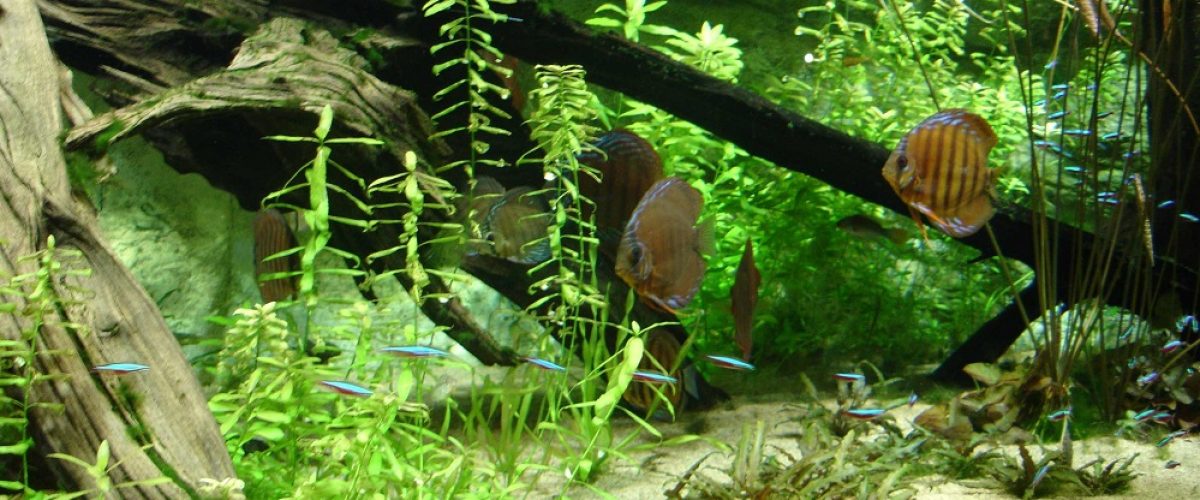Keeping fish and Invertebrates in small aquariums is an art which has recently become a lot easier due to many advances in fishkeeping. It is easy to provide a stable and beautiful nano aquarium in your home or workplace with fantastic results.
Nano aquariums are classed as small tanks usually no more than 35 litres that contain a miniature environment for marine and tropical species. In this example we have set up a small Dennerle 20 litre aquarium suitable for freshwater fish species and a couple of small and well suited fish.
The nano aquarium can in fact be a little more difficult than its larger brother due to the less stable conditions provided by the relatively small volume of water. Nano aquarists pride themselves on keeping their water quality pristine as any deterioation can have a huge impact on the well being of the inhabitants.
There are many products now developed especially for the nano aquarist designed to make the hobby easier
Freshwater:
Nano heaters
Nano lighting
Nano CO2 sets
Nano gravels and decor
Nano plants
Marine:
Nano lighting
Nano Led’s
How to set up a planted nano aquarium
Stage one:
Open up your kit, inspect all equipment, ensure the lights work and check for any damage or missing pieces. There’s nothing worse than getting half way through a tank setup to find out the light unit doesnt switch on or you are missing something important.
Next stage is to inspect the aquarium, check for any cracks and fill the tank with tap water to test for any leaks. We recommend you test on the kitchen sink as long as the surface is flat and smooth with nothing that could scratch or damage the aquarium.
Leave the aquarium filled over night and check for any leaks or seepage.
Now its time to start!
Planted tanks benefit well from having a nutrient rich substrate under the gravel for feeding the plants and promoting good root growth. In the Dennerle range the complete aquariums come with all equipment used in this example.
Deponit mix is poured into the tank and spread out evenly:
Stage two:
Spread the gravel evenly and carefully over the base layer
Stage 3:
Add the heater and filter before introducing any rocks or wood to ensure everything fits well
Its always best to attempt to arrange your decor outside of the tank to see what works. This way you limit the amount of time spent moving heavy pieces around and you reduce the risk of scratching or scuffing the aquarium glass.
Once you are happy with your arrangement carefully place it in the tank. Be sure to have pre soaked any wood as otherwise it will float as soon as you fill your tank and could posisbly ruin the display.
Stage 4:
Now is the time to plant your aquarium.
The tools for this are:
– A sharp pair of aquatic scissors
– Long planting tweezers.
For our display we used the Tropica Live Plants, we think they are the bee’s knee’s for these simple reasons:
– Grown in sterile conditions so NO diseases and NO pests!
– Grown in a super food filled jelly which gives them the best start when put into your aquarium
– Great quality plants that grow super fast as soon as they are placed in water
Break up the Tropica plants into several small pieces by using sharp scissors, wash off the jelly to remove excess nutrients.
Carefully place the plant pieces into the aquarium, if planting is taking a while you could spray them with water to prevent them drying out. You can use fine twine to hold the plants into place if needed, after the plants have rooted this can be cut away.
Plants used in our display where:
Tropica 1-2 Grow Eleocharis parvula Live Plants
Tropica 1-2 Grow Ludwigia repens ‘Rubin’ Live Plants
Tropica 1-2 Grow Limnophila sessiliflora Live Plants
Tropica 1-2 Grow Glossostigma elatinoides Live Plants
Tropica 1-2 Grow Lilaeopsis brasiliensis Live Plants
Tropica 1-2 Grow Marsilea hirsuta Live Plants
Step 5:
Once you have completed your display you can slowly fill your aquarium with pre-heated and de-chlorinated water, this ensures you don’t shock the plants. Use a plate to pour the water onto or pour the water in cup by cup until the aquarium is filled carefully without disturbing your display.
Step 6:
Once the tank is filled power up your filter and heater and ensure everything is running correctly.
After a few hours any cloudiness in the tank should clear
After one week:
After three weeks:
We have added a few cherry shrimps and the tank is developing nicely
Cherry Shrimps are great inhabitants for the freshwater nano aquarium:
After four Weeks:
This is what happens if you forget to prune your Tropica plants over Xmas- they grow so fast!












